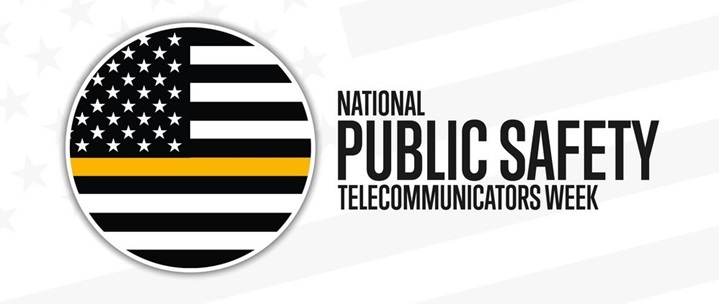DISA honors public safety telecommunicators
Office of Strategic Communication and Public Affairs
April 8, 2022

The Defense Information Systems Agency joins the Department of Defense, the Cybersecurity and Infrastructure Security Agency, and other federal, state, local, tribal and territorial partners in honoring public safety telecommunicators.
National Public Safety Telecommunicators Week, from April 10-16, is held annually during the second full week of April to recognize the thousands of men and women who respond to emergency calls, dispatch emergency professionals and equipment and render lifesaving assistance to the citizens of the United States. Public safety telecommunicators include 9-1-1 operators and fire dispatchers who answer emergency and nonemergency calls.
In 1994, President Bill Clinton proclaimed, “This week is a time for a grateful nation to show its appreciation and to recognize that our health, safety, and well-being are often dependent on the commitment and steadfast devotion of public safety telecommunicators.”
Military services are conducting various events such as barbecues, raffles, no uniform day and more.
DISA is publicly thanking public safety telecommunicators for their lifesaving work and sharing 9-1-1 reminders with the public safety community.
“We collected numerous letters for DOD public safety telecommunicators and published them on the 9-1-1 Telecommunicator Tree of Life,” said John Holloway, DISA Global Public Safety Communications Ecosystem Modernization deputy director. “To get involved contact your installation’s Department of Emergency Services and pass along a ‘thank you’ in the form of a card or some baked goods.”
This Tree of Life story was submitted by the Air Force to recognize 9-1-1 operator Senior Airman Sheldon Wagner in Scott Air Force Base, Illinois:
Wagner received a 9-1-1 call Nov. 3, 2021, for a three-month-old infant that had choked, was not breathing and possibly in cardiac arrest. He immediately dispatched Engine 22 and Medic 28. Engine 22 arrived on the scene first and notified Wagner that the patient had visible cyanosis in the limbs and a ghost-white face.
He updated the responding medics and coordinated the rapid transport of the infant to the nearest medical treatment facility off base. He then prebriefed the emergency room doctors and continued to update them with any new or pertinent information.
Wagner also maintained contact with the medical team while they transported and stabilized the infant until the crew was able to arrange a transfer to the emergency pediatric team, who then coordinated a medical evacuation flight to a higher level of care.
In April and throughout the year, DISA’s Global Public Safety Communications team partners with members of the armed forces and the DOD community to issue emergency response updates and life-saving reminders.
9-1-1 – the number to know
- Call if you can, text if you can’t: Text-to-9-1-1 service is available in an increasing number of communities around the country. The service benefits individuals or persons who are deaf, hard of hearing or in a situation where they cannot speak and make a voice call. However, a traditional voice call, if possible, is still the best way to reach emergency services.
- Know your location: Wireless calls to 9-1-1 provide location information, but 9-1-1 call takers may need more specific information. Be prepared to provide detailed information on where you are so that help can get to you as quickly as possible.
- Stay calm and don’t hang up: Until you are instructed to do otherwise, stay on the line so you can provide any necessary information or assistance to the 9-1-1 call-taker. Even if you accidentally call 9-1-1, don’t hang up. Inform the call-taker that you dialed accidentally and that there is no emergency.
For more information, visit National Public Safety Telecommunicators Week.
Learn More
Follow us on Twitter, LinkedIn and Facebook to learn more about how DISA is strengthening the nation and warfighter communications.
Subscribe to receive the latest DISA news.
DISA: Trusted to Connect, Protect and Serve
Learn more